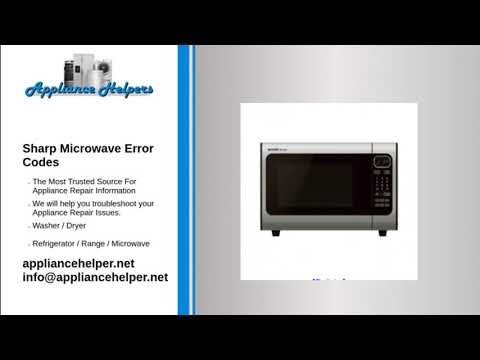
Let’s break it down in a way that’s easy to follow. Imagine error codes as your microwave’s way of waving a little red flag that says, “Hey, something’s not quite right here!” The E1 code specifically means there’s a sensor issue. It’s akin to your body reacting to the cold with a sneeze or shiver—it’s a signal that something is amiss. But does this mean you need to toss your microwave out the window? Not exactly.
Understanding Error Code E1
First things first, let’s dive into what this pesky E1 code truly signifies. Think of it as your microwave’s version of a hiccup. It’s specifically related to a sensor error, often the humidity or temperature sensor. Just like a thermostat that’s gone haywire in winter, these sensors can sometimes act up, causing the microwave to flash E1 at you.
These sensors are crucial because they help the microwave gauge whether it’s overheating or if the interior is too steamy. Imagine driving a car without a speedometer—it gets tricky, right? Similarly, without these sensors working correctly, your microwave struggles to regulate itself. This doesn’t mean your microwave is entirely useless, but it does suggest that it’s not functioning at 100% capacity. If you continue using it without addressing this issue, you might not get the best performance out of it.
You might be curious about how these sensor issues arise. Often, it’s due to prolonged use or a bit of wear and tear. Just like how shoes might wear out after miles of walking, frequent use of microwaves can lead to sensor failures. Dust or residue buildup inside the microwave can also play havoc with these sensors, much like how a layer of dust can make your allergies flare up. It’s not necessarily a death sentence for your microwave, but it is a nudge to take action.
Is It Safe to Continue Using Your Microwave?
So here’s the million-dollar question: Can you still use your microwave with this error code? The short answer is, it’s not recommended. Continuing to use a microwave with a sensor issue is like ignoring a warning light on your car’s dashboard. It might still run, but you’re taking a bit of a gamble. The microwave might not heat as efficiently, leading to partially cooked food, or worse, it might overheat.
There’s also the potential for minor electrical issues. It’s a bit like leaving a dripping tap unfixed—it might not flood your house immediately, but it’s not great to leave it unattended. The worst-case scenario is that prolonged use could lead to further damage internally, which could be costly to repair.
If this error pops up, it’s best to pause and consider getting a professional’s opinion. It might be a simple fix, like cleaning out dust or residue, or it could require a deeper look at the internal workings. Better to be safe than sorry, right?
Steps to Take When You Face Error Code E1
Now that you know what the code means and why it’s a concern, let’s talk about possible steps you can take. Imagine the E1 code as a gentle nudge from your microwave to get a check-up. Begin by unplugging the microwave. This is similar to rebooting your computer when it acts up and gives it a chance to recalibrate. Wait a bit before plugging it back in to see if the error disappears.
If the code persists, it might be time to roll up your sleeves or call in a pro. Checking your microwave’s manual can be incredibly helpful. It’s much like checking a recipe before starting to bake—helps avoid unnecessary surprises. The manual might offer troubleshooting tips specific to your model.
If you’re not particularly tech-savvy or the problem seems beyond a quick fix, reaching out to a professional repair service is your safest bet. Just like you wouldn’t perform dental surgery on yourself, sometimes professional help is the wisest choice.
Preventative Care and Final Thoughts
Here’s the deal: Like any other home appliance, taking a few preventative steps can extend your microwave’s life significantly. Ensure you clean it regularly. Just like brushing your teeth can prevent cavities, a little maintenance can keep sensor issues at bay. Avoid slamming the door or overloading it with large dishes, which can strain the sensors over time.
In closing, while the E1 error code isn’t the end of the world, it’s certainly a wake-up call. Taking swift, informed steps can ensure your microwave is back to working order, safely. So next time you see that E1 flash, you’ll be ready to tackle it head-on, with a plan in hand and peace of mind intact.